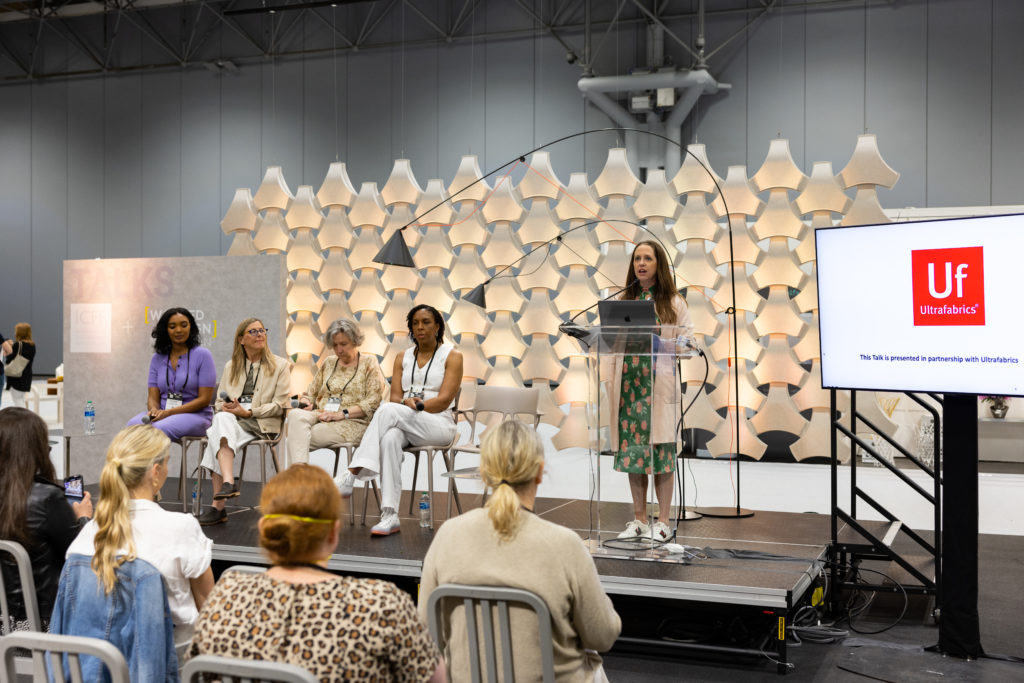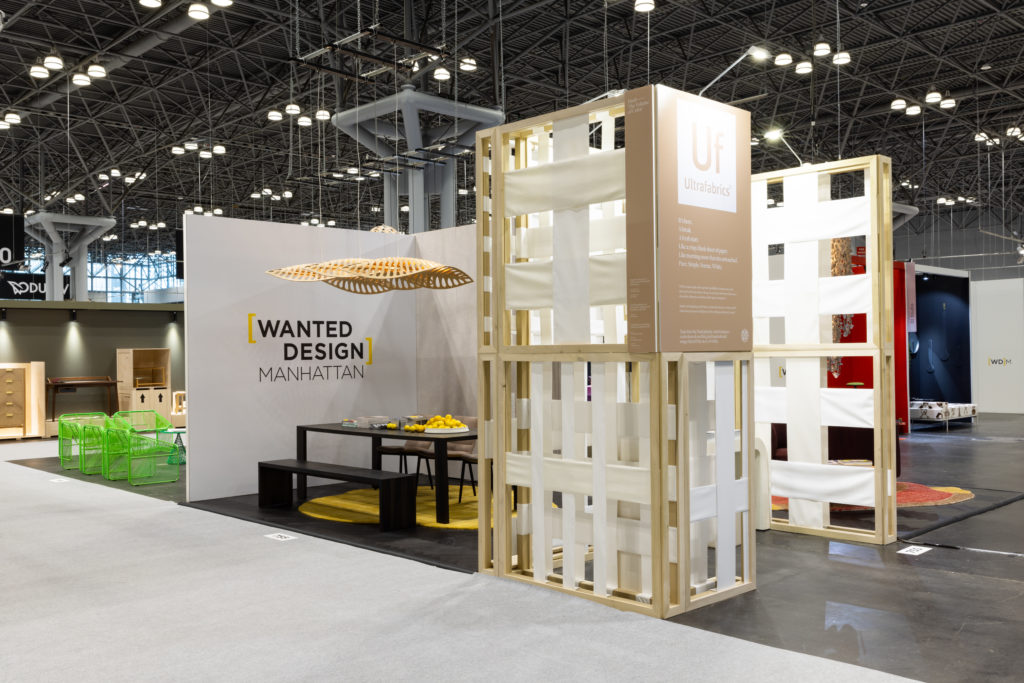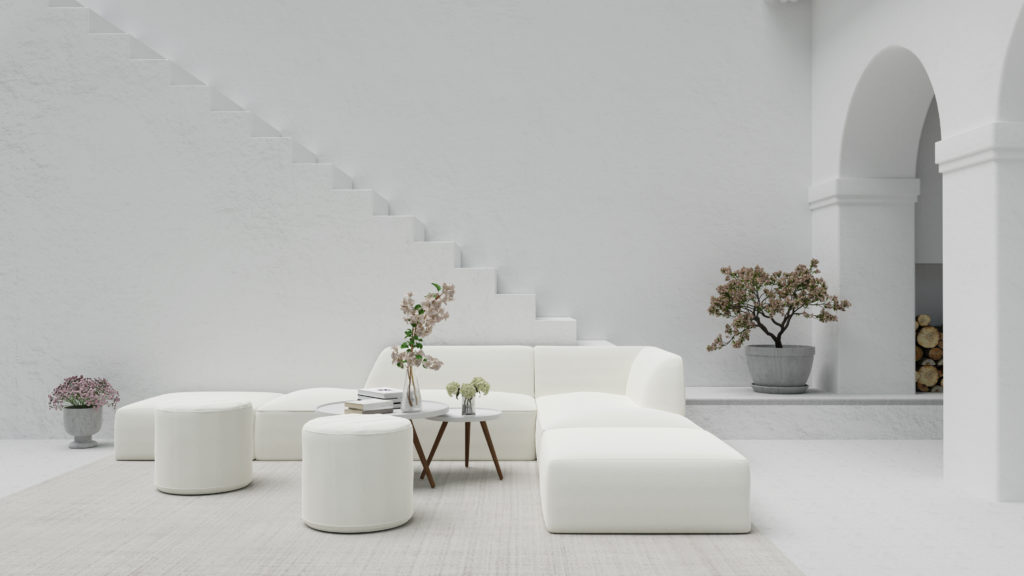WantedDesign is a dynamic connector and amplifier for global design, fostering creative synergy and serving as a pivotal crossroad for the international design community across Latin America, North America, and Europe.
Design for Tomorrow: Exploring The Volume of Color

Design for Tomorrow: Exploring The Volume of Color
Ultrafabrics brings leading voices in curation, design and editorial to discuss the past and future of neutral color palettes
Contributing editor: Jeroen Bergmans, Ultrafabrics
On the first day of WantedDesign Manhattan 2022, high-performance fabrics manufacturer Ultrafabrics sponsored a panel discussion with design industry thought leaders to explore the use of neutral color palettes and rebuke traditional notions of neutral tones. Ultrafabrics is the go-to vegan performance textile for partners across 11 markets including MillerKnoll, Fitbit, Jaguar Land Rover and the global architecture and design community. Ultrafabrics’ Color Lab, its internal hub of trend forecasting and innovation, has noted a significant uptick in the use of neutrals across all of its markets, and wanted to further explore this with the industry’s top thinkers.

The talk was moderated by Stacy Shoemaker Rauen, Editor-in-Chief, Hospitality Design Magazine and Senior Vice President, Design Group, Emerald. The four panelists were Nicole Meier, Director of Brand, Ultrafabrics; Saana Baker, Editor in Chief, The Textile Eye; Matilda McQuaid, Acting Curatorial Director, Cooper Hewitt, Smithsonian Design Museum; and Kathianna Rousseau, Director | Senior Associate, Rockwell Group.
The Evolution of Neutrals
Whites, greys and blacks are timeless shades that have historically been used to highlight brighter colors. Matilda McQuaid referenced darning samplers from the Cooper Hewitt’s collection dating back to the 18th and 19th centuries that used a neutral linen foundation to test sewing skills and demonstrate particular stitches to young girls. They look like modernist paintings and the neutral tones of the linen speak in interesting ways – they still inspire contemporary textile designers today.

Saana Baker pointed out that weaving techniques have changed very little in 8,000 years. Natural linens and cotton offer a stunning range of tones and colors, allowing for personal expression, but new technologies, like the ones that drive innovations at Ultrafabrics, have opened up the possibility of using shades of white in many more environments.
Nicole Meier explained that engineered fabrics offer any color across any medium but also durability, cleanability and haptics, and the fact designers can trust the product to stay pristine even in high-traffic commercial areas. “Ultrafabrics’ clients use neutrals for all kinds of products and environments – automotive clients often specify an all-white interior for their cars, Fitbit uses biobased Volar Bio in Silverstone as its first vegan leather watchband option for customers. Jaguar Land Rover continues to introduce lighter vegan interior options with Ultrafabrics, Virgin Galactic opts for greys with a pop of color and leading furniture brand Allsteel uses many whites, including Ultraleather Pro in White Wash, even testing the materials in-application in their offices to confirm durability and performance. Thanks to new technologies, designers can specify whites for commercial furniture and the built environment without apprehension.”
As we emerge from the pandemic, neutral palettes offer us a sense of relaxation. Kathianna Rousseau confirmed that textured neutrals have emerged as a trend in hospitality, even in high-traffic areas. Matilda McQuaid said that neutrals are historically linked to a feeling of rest and recovery – for example, they predominated at the Paimio Sanitorium designed by Alvar Aalto in the 1930s, which appeared in the Cooper Hewitt exhibition Design and Healing.
How to Layer Neutrals
Textures and undertones can keep neutrals fresh and on-trend, create a warm or a cool environment, and define architectural spaces. Designers can use different neutral palettes that interact with one another.
Kathianna Rousseau explained that the magic behind The Rockwell Group’s interior design concept for the New York Edition Hotel, for example, lies in layering neutral textures. Designers start with a neutral stone or wood, then they layer in texture that interacts with the space. This opens up the opportunity to introduce personality and brand, letting different fabric, art, plants and colors set the stage for spectacle and allowing guests and occupants to shine.

There isn’t a ‘perfect percentage’ when it comes to specifying neutrals – you need a subtle eye and an understanding of tones so different neutrals will work together. Saana Baker said that contemporary clients often choose cooler, grey-based tones and a collection based on taupe, for example, will need an accent color to create a cohesive collection.
A third of Ultrafabrics’ entire collection is neutrals. Nicole Meier explained that the company uses lab-dipping by hand to create colors that are then studied under different lights to produce textiles that have the correct nuances to meet global trends. Consistency is key.
Sustainability and the feeling of connecting to nature
As sustainability is front of mind for the design world, Stacy Shoemaker Rauen asked the panel whether it is more eco-friendly to use neutrals.
Kathianna Rousseau said that Rockwell Group used crisp, white linens and natural colors at the Equinox Hotel in Hudson Yards as it is branded as a wellness experience. Neutrals offer a sense of nature, luxury and a residential feel, encouraging guests to decompress.
Nicole Meier explained that Ultrafabrics has a three-pronged approach to sustainability. The company is striving to use more renewable materials; reduce energy and water use in its factories; and has set accountability goals for 2030.

Ultrafabrics launched Hush, its new curated collection of white and off-whites, at WantedDesign Manhattan 2022.



